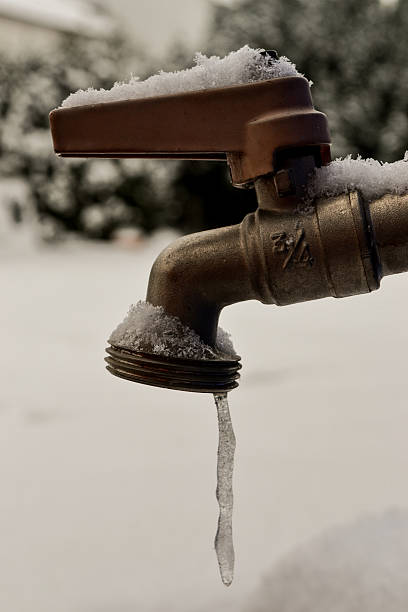Just how do you feel when it comes to Prevent Frozen Pipes ?

Cold weather can damage your plumbing, particularly by freezing pipelines. Here's exactly how to stop it from taking place and what to do if it does.
Introduction
As temperature levels drop, the threat of icy pipes boosts, potentially causing pricey repairs and water damages. Comprehending just how to avoid frozen pipelines is essential for homeowners in cool climates.
Avoidance Tips
Shielding prone pipes
Cover pipes in insulation sleeves or utilize warm tape to secure them from freezing temperature levels. Focus on pipes in unheated or external locations of the home.
Heating techniques
Maintain interior rooms adequately heated, particularly locations with pipes. Open up closet doors to permit warm air to flow around pipelines under sinks.
Exactly how to identify frozen pipes
Search for reduced water circulation from taps, unusual odors or noises from pipes, and visible frost on exposed pipes.
Long-Term Solutions
Structural modifications
Think about rerouting pipelines far from exterior wall surfaces or unheated locations. Add extra insulation to attic rooms, basements, and crawl spaces.
Updating insulation
Purchase high-grade insulation for pipes, attic rooms, and walls. Correct insulation assists keep constant temperature levels and minimizes the risk of frozen pipes.
Securing Outdoor Pipes
Garden hose pipes and exterior faucets
Separate and drain yard pipes prior to winter months. Install frost-proof faucets or cover exterior faucets with protected caps.
Understanding Icy Pipelines
What triggers pipes to ice up?
Pipelines ice up when subjected to temperature levels listed below 32 ° F (0 ° C) for extended durations. As water inside the pipelines ices up, it expands, taxing the pipe walls and possibly creating them to break.
Threats and problems
Frozen pipelines can lead to water disturbances, residential property damages, and costly repair services. Ruptured pipelines can flooding homes and create extensive structural damage.
Indicators of Frozen Water Lines
Identifying icy pipelines early can avoid them from bursting.
What to Do If Your Pipelines Freeze
Immediate actions to take
If you suspect icy pipes, maintain faucets open to relieve pressure as the ice thaws. Utilize a hairdryer or towels taken in warm water to thaw pipelines slowly.
Conclusion
Protecting against icy pipes requires positive measures and fast reactions. By understanding the causes, indicators, and safety nets, house owners can safeguard their pipes throughout cold weather.
5 Ways to Prevent Frozen Pipes
Drain Outdoor Faucets and Disconnect Hoses
First, close the shut-off valve that controls the flow of water in the pipe to your outdoor faucet. Then, head outside to disconnect and drain your hose and open the outdoor faucet to allow the water to completely drain out of the line. Turn off the faucet when done. Finally, head back to the shut-off valve and drain the remaining water inside the pipe into a bucket or container. Additionally, if you have a home irrigation system, you should consider hiring an expert to clear the system of water each year.
Insulate Pipes
One of the best and most cost-effective methods for preventing frozen water pipes is to wrap your pipes with insulation. This is especially important for areas in your home that aren’t exposed to heat, such as an attic. We suggest using foam sleeves, which can typically be found at your local hardware store.
Keep Heat Running at 65
Your pipes are located inside your walls, and the temperature there is much colder than the rest of the house. To prevent your pipes from freezing, The Insurance Information Institute suggests that you keep your home heated to at least 65 degrees, even when traveling. You may want to invest in smart devices that can keep an eye on the temperature in your home while you’re away.
Leave Water Dripping
Moving water — even a small trickle — can prevent ice from forming inside your pipes. When freezing temps are imminent, start a drip of water from all faucets that serve exposed pipes. Leaving a few faucets running will also help relieve pressure inside the pipes and help prevent a rupture if the water inside freezes.
Open Cupboard Doors
Warm your kitchen and bathroom pipes by opening cupboards and vanities. You should also leave your interior doors ajar to help warm air circulate evenly throughout your home.

Do you appreciate reading up on How to Prevent Your Pipes From Freezing? Write a remark down below. We will be happy to listen to your reactions about this page. Hoping to see you back again in the near future. Sharing is good. You just don't know, you may very well be helping someone out. Bless you for your time. Kindly check our blog back soon.
Book Inspection
Comments on “Shielding Pipes from Freezing Damage: Key Tips”